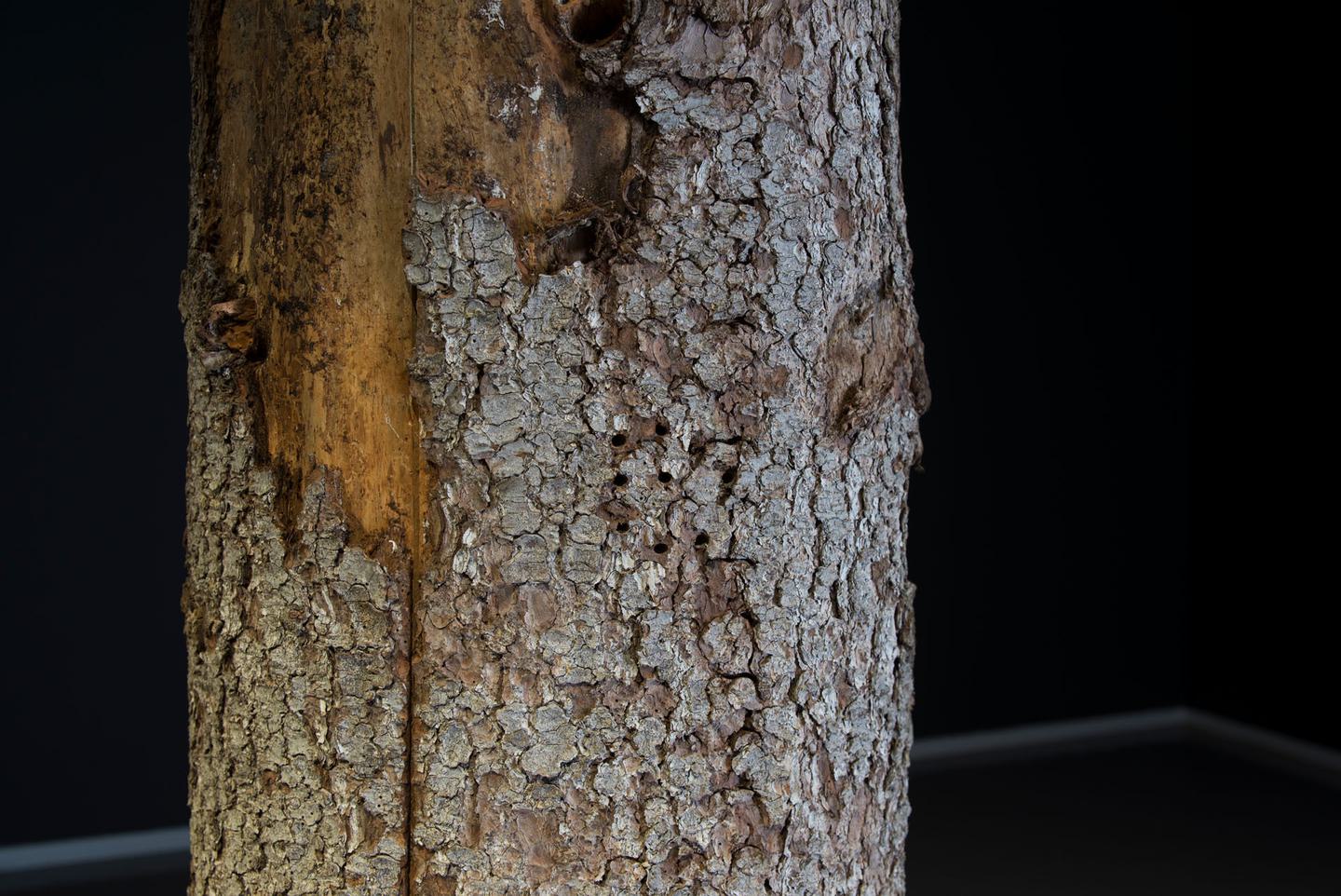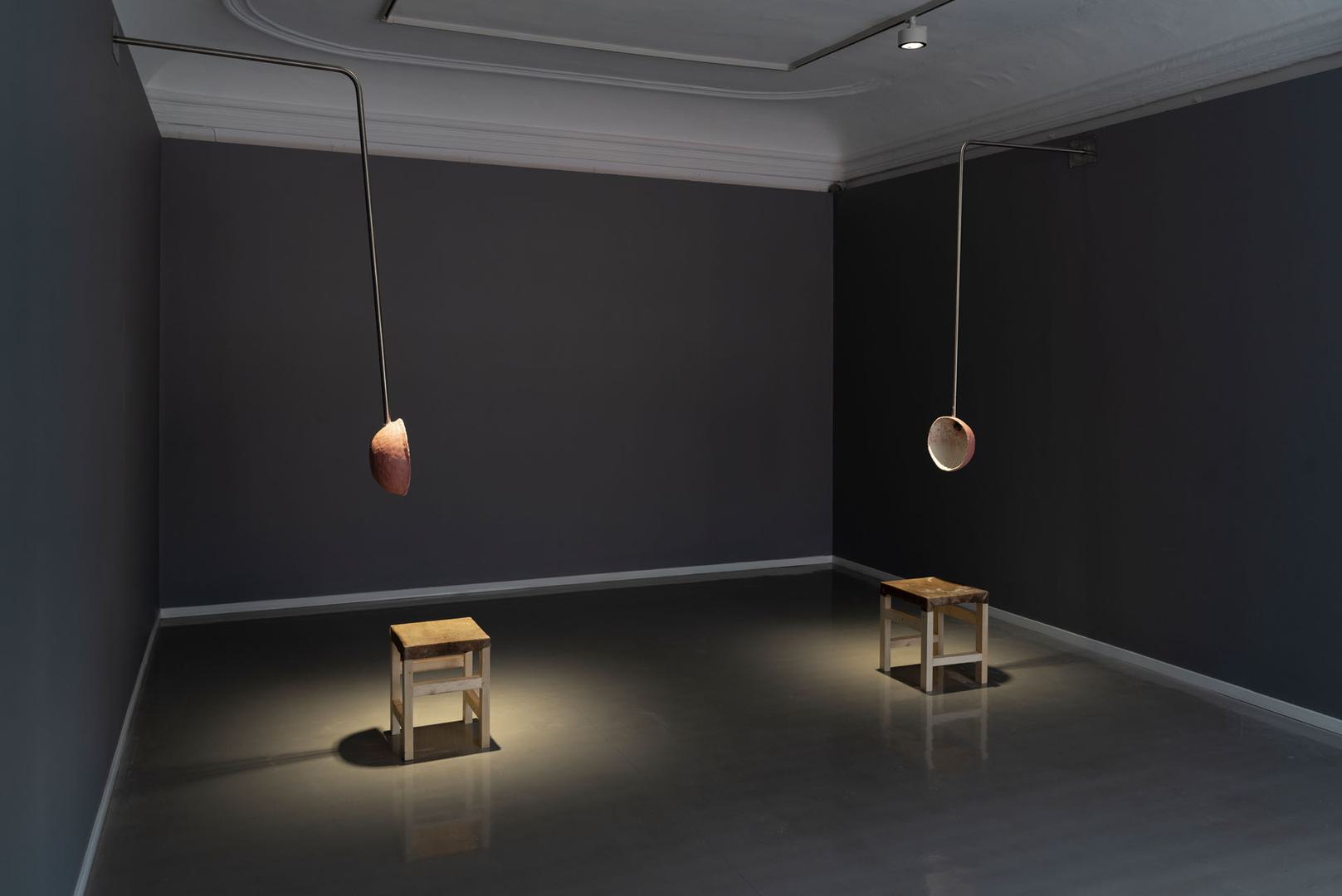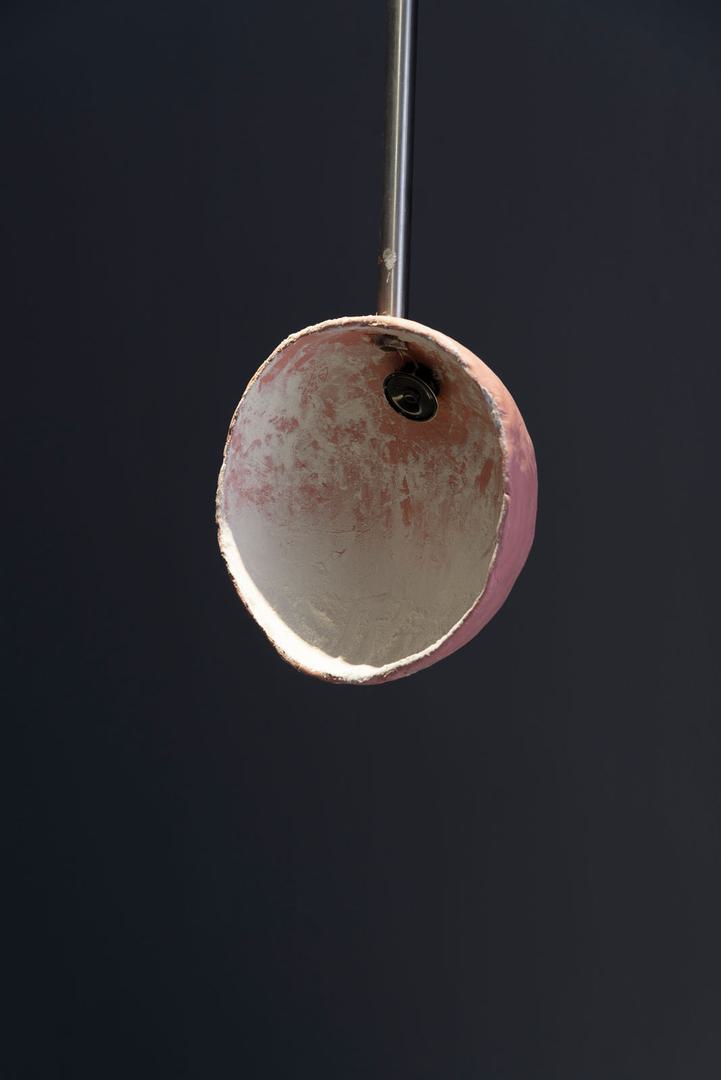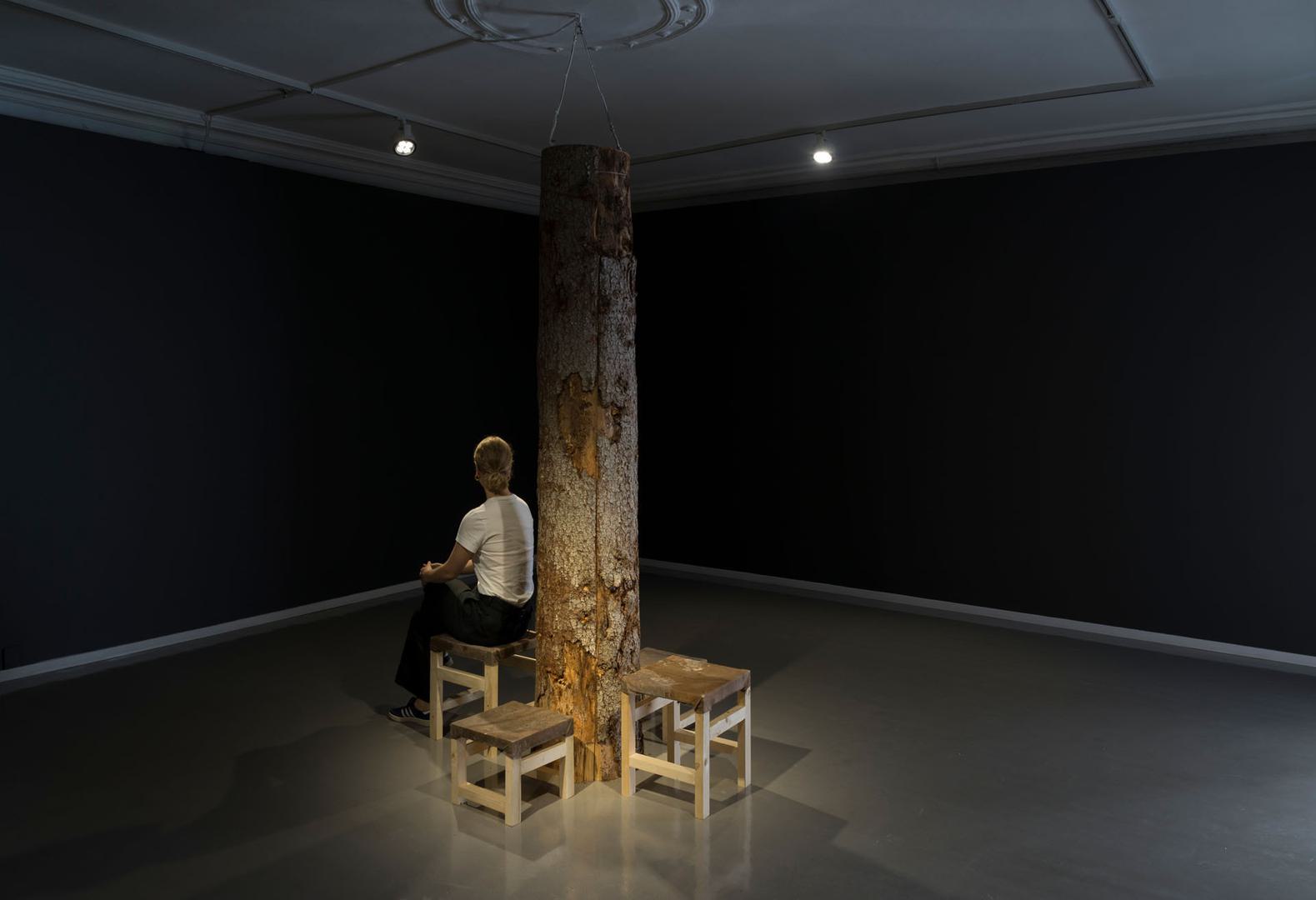Anawana Haloba
Conversations with Stitched-up Lips

Anawana Haloba, Conversations with Stitched-up Lips, 2018
We are happy to commence the autumn season with the exhibition Conversations with Stitched-up Lips by Anawana Haloba, presenting a new site-specific sound installation.
In this exhibition, the audience is invited to listen to fragments of text, noise and tones with reference to trauma, healing and psychoanalysis via a number of sculptural audio stations.
No one is capable of speaking without a mouth – and stitched-up lips suggest silence. Silence as a result of not listening, or a prohibition against speaking – a conversation that defies violent muting gives association to resistance, unity and hope.
Anawana Haloba's work explores communities' contingency within historical, cultural and architectural contexts. She is currently a Phd Fellow through the Artistic Research Fellowship Programme (PKU) at the Department of Fine Art, University of Bergen. Her research, titled Subtle Encounters, looks at women's roles in independence movements and decolonialization in Africa and the Caribbean. The exhibition Conversations with Stitched-up Lips constitutes a component in Haloba’s research.

Anawana Haloba, Conversations with Stitched-up Lips, 2018
The installation consists of material collected on research trips conducted in 2017-2018 to Zambia and Tanzania. These locations are important to the dissemination of Frantz Fanon's philosophy and his writing about liberation and identity. Fanon (1925-1961), who grew up in the French colony of Martinique in the Caribbean Sea, a physician, psychiatrist and philosopher turned Algerian revolutionary, was one of the most important and controversial thinkers of the post-war period. The mention of Frantz Fanon evokes utopian and revolutionary imagery throughout the developing world and diaspora communities of the 1960s. The titles The Wretched of the Earth; Black Skin, White Masks and Towards the African Revolution reverberated with a polemic rhetoric calling for ‘resistance’ of the colonized.
During the 1960s Dar es Salaam was the starting point for the unification of the various African liberation movements, inspired in part by the work of Frantz Fanon. The University of Dar es Salaam was one of the first African institutions to engage with Fanon's work.
Although this is not a museum exhibition about African revolutionaries and thinkers, it does contain important references to the University of Dar es Salaam’s school of thought and how it connects to Pan-Africanism, something that in most cases isn’t part of Scandinavian common knowledge.
The exhibition offers three different modes for gaining knowledge through active listening and a mix of pre- and postcolonial frameworks. One of them is a fragmented poetic collage, another is a ritualized catharsis, the last is the oral tradition that is part of our social history. Throughout, Haloba lets contradictions coexist, rather than smoothing them over. Fanon as a philosopher and Fanon as a militant activist are not mutually exclusive. These are the contradictions that Haloba embraces.
In the exhibition’s first room Anawana Haloba has written a poetic text in eight stanzas positioning herself in Fanon’s universe. Each station delivers one stanza together with a soundscape. The first room represents trauma and Fanon as a philosopher.

Anawana Haloba, Conversations with Stitched-up Lips, 2018
According to a Zambian traditional treatment of mumps one should scream into a mortar containing ground herbs. In the exhibition’s second room the two listening stations each have a ceramic bowl that has been treated with a mix of ground cassava and cinnamon. The second room represents healing and psychoanalysis – Frantz Fanon as a physician.
A village square surrounding a tree is a universal gathering space. It points to the oral tradition, anecdotal sources and the importance of folk tales. The third room also represents Fanon as the activist.
Throughout the exhibition Haloba is asking why Fanon isn’t considered a thinker in his own right connected to the African history of philosophy and the pre-colonial traditional context. Fanon was a radical and humanistic thinker with innovative theories on race, revolution, identity and violence, despite receiving criticism for his work as masculinist and phallocentric by some within the women’s movement. Therefore, in order to perform a rethinking of Fanon's humanistic legacy Haloba has examined the socio-historical context surrounding Fanon. She has mapped his network, the people he worked with to be able to rethink the criticism that has been pointed towards him, especially from some feminist circles.
A conversation will take place on Friday August 24 at 14 between Anawana Haloba and Gabi Ngcobo, head curator of this year’s Berlin biennale. The conversation is free of charge and open for all.
Gabi Ngcobo is based in Johannesburg (South Africa) and Berlin. Ngcobo has been engaged in collaborative artistic, curatorial, and educational projects in South Africa and internationally since the early 2000s. She recently co-curated the 32nd Bienal de São Paulo, in which Anawana Haloba was a participating artist.

Anawana Haloba, Conversations with Stitched-up Lips, 2018
Bio
Anawana Haloba (b. 1978) lives and works in Oslo. She is a graduate from the Rijksakademie van Beeldende Kunsten in Amsterdam, Evelyn Hone College of Applied Arts in Lusaka and the Academy of Fine Art in Oslo. Haloba's work has been featured in both solo- and group shows, including the Rauma Biennale, Finland; ZKM Museum of Contemporary Art, Karlsruhe, Germany; the Venezia Biennale (2009); the Sydney Biennale (2008); Manifesta, Bolzano, Italy (2007), the Sharjah Biennale (2007 and 2013) as well as the biennale's in Sao Paulo (2016), Shanghai (2016) and Lyon (2017). Haloba's video installation «To Mars By All Means» was shown at Kulturkirken Jakob in Oslo August 3-12, presented by Transnational Arts Production (TrAP). Her previous solo presentation in Norway took place at Kunstnernes Hus in 2010.


